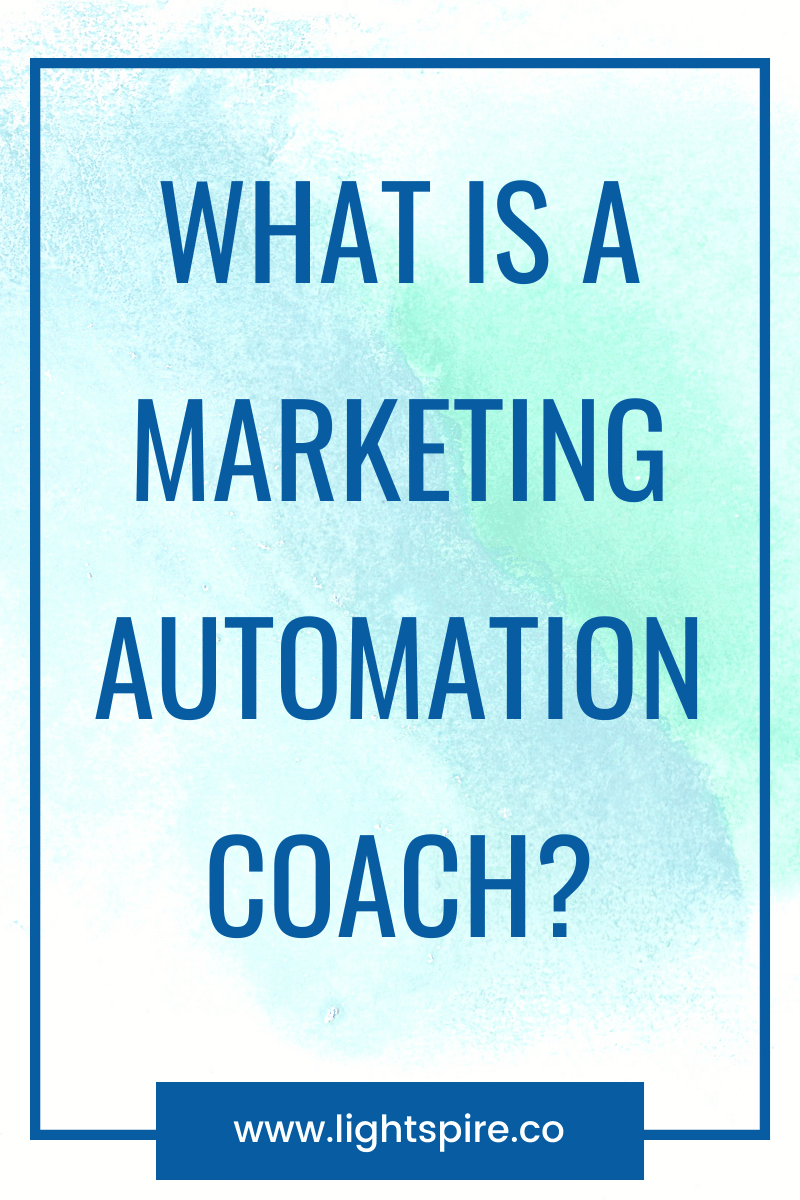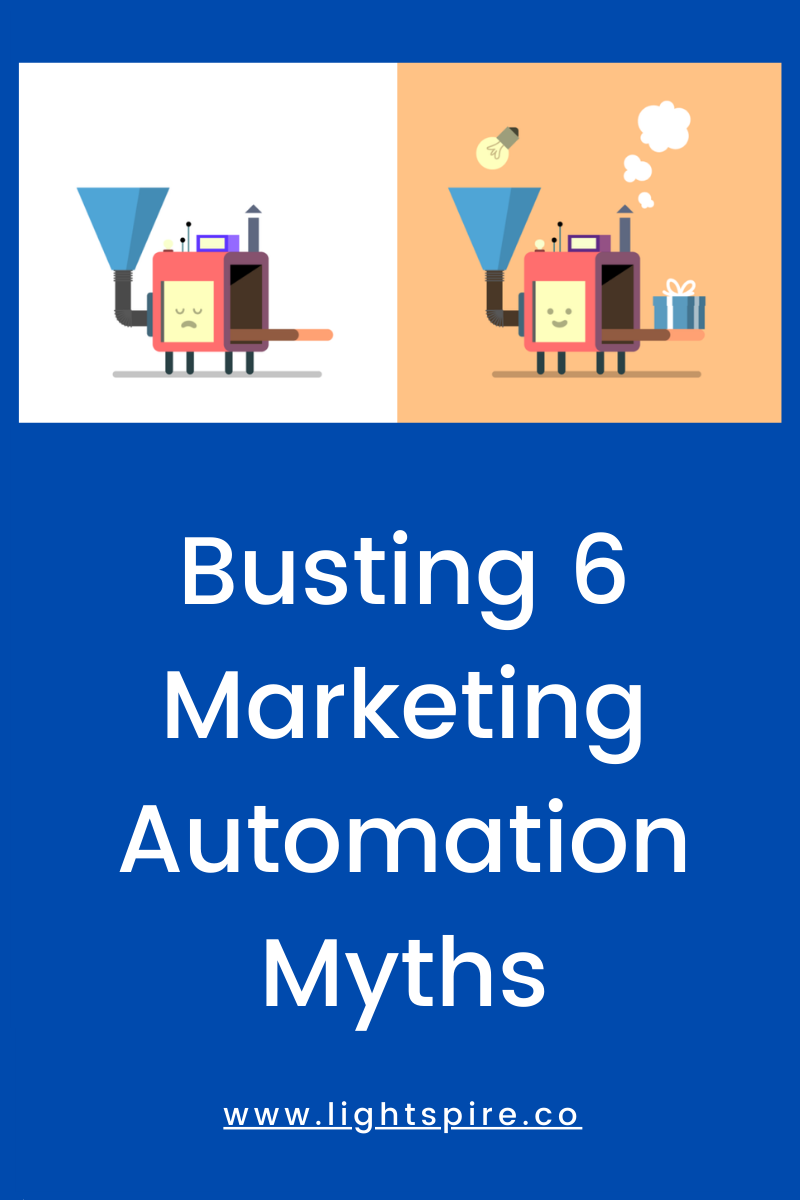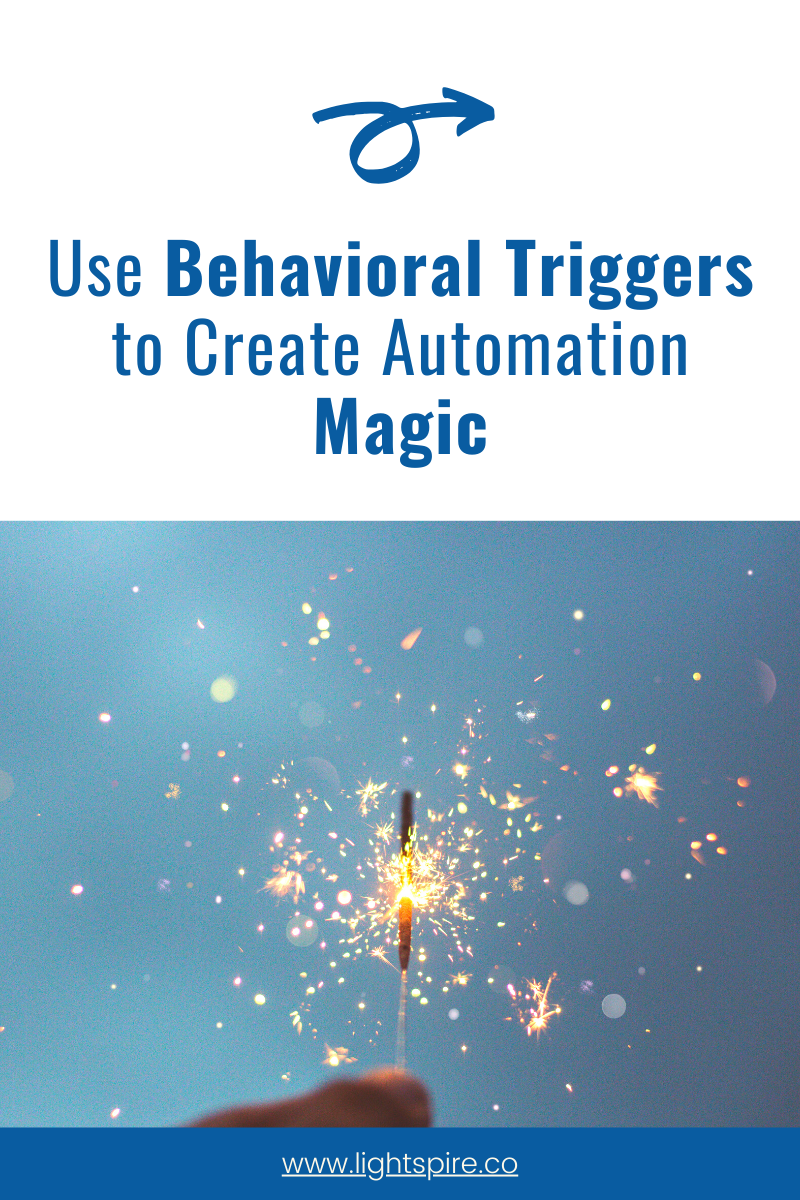Busting Some Marketing Automation Myths
As a marketing automation coach and growth marketing consultant, I spend a lot of time educating small business owners and entrepreneurs about marketing automation. The industry has come a long way in the past few years, and most people now have at least a basic understanding of automated email campaigns, scheduled social media posts, and the like. But when I talk about implementing a full automation strategy to work alongside their larger marketing plans, these same people often give me blank stares. Or I hear the dreaded objection of, “we want to take a more personalized approach”.
This kills me, because I know that with the right automation strategy in place these companies could be delivering more personalized, more customized, and overall better customer experiences!
So let’s get rid of those misconceptions! Below we’ll take a look at some of the biggest marketing automation myths, along with the real explanations of how automation can fit in to your marketing strategy.
Myth #1: Automation is robotic and impersonal
When thinking about marketing automation (especially for things besides email) I think a lot of people picture a black box with inputs and outputs, and no clear idea of what’s happening in the middle. Because of this, it can feel like the automation, instead of the marketer, is driving the results.
In reality, automation is a reflection of the marketer behind it, and their thoughts on how they can best help customers. Automated interactions are often more personalized, more customized, and more specific to the customer and their relationship with the company. Because automation workflows are built on the foundation of customer behaviors and preferences, they’re better able to respond to how customers prefer to interact.
This is the core principle behind good automation strategies. You want to reach the right customers, in the right place, at the right time, with the right messaging. That can be accomplished through proper segmentation, behavioral triggers, and providing value throughout the customer journey.
Myth #2: Automation is spam
This one is frustrating for me, because it’s an example of a few poor marketers ruining it for the rest of us. There are of course automated ways to spam people, and pretty much all spam is automated. But the reverse isn’t true.
In fact, automated messages are much more likely to be trusted, earned interactions with customers. Automated emails are usually sent to customers who have opted in to your email list based on the value they believe you will provide. And over time, you’ll get better and better at sending messages that your customers want, exactly when they want them. Customers can essentially decide when, where, and how they would like to communicate with you.
By automating your subscriber preferences you can even give the power back to your users on an individual email or theme basis. Subscribers can choose exactly which communications they would like to receive and how often they would like to get them, all without you lifting a (manual) finger. What’s spammy about that?
Myth #3: Automation is just for email
Many of the use cases for marketing automation are driven by email, but there is so much more out there.
Automation has come a long way, and is now used for a huge number of marketing tasks. You can automate social media posting and responses, database changes, CRM updates, content curation and sharing, chat with customers and prospects on your website, send text messages, analyze live phone calls, and more. If you can think of a marketing goal, there’s a good chance you can automate at least part of it.
But it’s important to remember that just because you can automate something, doesn’t mean you should. Think carefully about the parts of your business where you want to provide one-on-one response and live human engagement. Ideally you want customers to have quick (automated) answers to easy questions, but have humans around to help with more in-depth or one-off questions from leads and customers.
Myth #4: Automation is lazy
Or, the close variant: Automation is for lazy people. I actually think this one has gotten a lot quieter over the last few years, but in the beginning automation came with a bit of a stigma. Those who were at the forefront of automating were seen as the “lazy founders” or “lazy employees” who couldn’t be bothered to put in the work of marketing. It’s only when everyone saw how much more productive their marketing efforts were that those voices started to quiet down.
Thankfully, most people now realize that automation has a lot of benefits - accomplishing a lot of the rote, repetitive tasks of marketing and leaving time for the real work of engaging and interacting with customers and answering their questions. It leaves time for creating high quality content, finding new ways to share your story, and creating community among your audience.
Myth #5: You can “set it and forget it”
Overall, one of the biggest misconceptions about marketing automation is that once you have it in place, you’ll never have to look at your marketing again. You can put your feet up and wait for the customers to come rolling in. In reality, marketing automation will do a lot of the heavy lifting for you, but there will still always be work to be done. I like to think of myself as a scientist when I’m automating, testing different hypotheses and theories and seeing what works. If you go in to automation with this mindset, you’ll be in a better position to put in the work you need and appreciate the results you get.
In reality, you will spend a fair amount of time going back to old workflows to see how they’re doing, tweaking your triggers and the resulting actions, and making the experience better for customers over time. You’ll see your results change as different segments become more or less important for your business overall. And you’ll update with fresh content, fresh email copy, and increased wisdom about your audience. You’ll never stop testing and optimizing, but the changes are often small and have big results.
Myth #6: Automation will fix all your marketing problems
This would be great - but that silver bullet doesn’t exist. In fact, if no one ever believed in silver bullets of any kind we could skip a lot of advice, blogging, and consulting. Take it from me (and anyone who has ever given advice about anything): silver bullets don’t exist.
“Marketing automation doesn’t fix strategy problems. If there’s a flaw in your thinking, it will just become an automated flaw.”
In reality, your strategy and your knowledge about your audience will form the foundation for your automation workflows. So if there’s a flaw in your thinking, it will just become an automated flaw. The good news is that you may see where you’ve gone wrong a lot quicker because you’ll be measuring and testing and optimizing your workflows, and can see issues as they come up.
Hopefully busting these myths has given you a better idea of what marketing automation can do, what it is, and what it isn’t. When you’re ready, start playing with automating a few of your outreach emails and feel the content weight slowly lift off your shoulders. Then come back to tell me in the comments how it went!
Ready to write your own non-spammy emails that get you sales? I’ve created a free email course to teach you how to nurture leads with content they actually want to read.
Click here to take the free Lead Nurturing Power Path email course!











